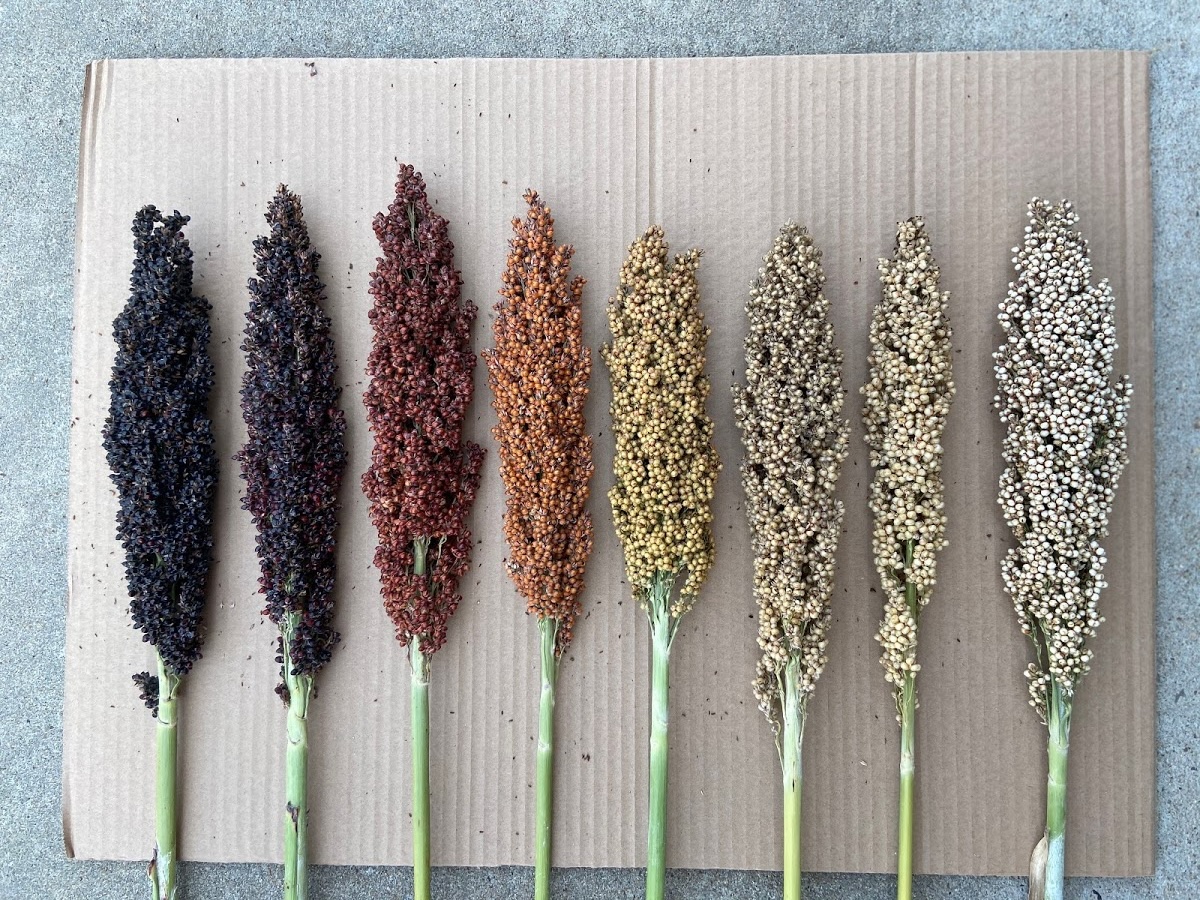Grain sorghum’s water use efficiency, soil health and nutritional benefits are increasing in recognition. However, an often overlooked feature is the captivating array of colors of its grain kernels.
There is nothing more visually appealing in agriculture than visiting a variety trial just prior to harvest and observing the multiple grain colors. The colors can vary from pearly white, lemon yellow, brown, bright red to black to everything in between. Not surprisingly, what determines the final color of any particular hybrid is based on multiple kernel traits and not just the altering of the color of the outer layer of the kernel.
Color variables
The actual color is determined primarily from three genetically controlled variables. These are the pericarp (seed coat or bran) color and thickness, the presence or absence of a sub-layer beneath the pericarp called the testa, and the endosperm color and texture.
The pericarp is made up of multiple layers and can be red, yellow or white (colorless) and its thickness can vary greatly. A thin pericarp will be more transparent, allowing the testa and endosperm to have a greater influence on the final color. A thick pericarp will be opaque and the grain will range from white to brown with a dull appearance.
The testa will be yellow or brown but is not present in most grain sorghum hybrids planted in the U.S. This is because the testa contains tannin which makes the grain less desirable for the animal feed industry. However, tannins are high in antioxidants and are increasingly favored in human and pet food products. For this market, a few testa containing hybrids are planted under contract.
These hybrids are normally black or burgundy in color, but there are exceptions to this rule. There are a few countries, such as Argentina, that plant high tannin containing grain sorghum hybrids for their bird resistant properties.
The endosperm of the sorghum seed is either white or yellow and influences the seed color when the pericarp is thin and transparent. For example, grain with a red thin colored pericarp with the absence of the testa or tannin layer and yellow endosperm, will be bronze in color. If the pericarp is red but thin, and there is not a testa layer, then the color of the underlying endosperm will influence the final grain color. A yellow endosperm color when mixed with the red pericarp would result in a bronzer-colored grain.
Color preference
End-users often prefer grain of a certain color such as the Chinese who prefer a red colored grain for the production of a popular alcoholic beverage, baijiu.
In the United States the poultry and food industries have historically preferred white grain free of plant pigment stains. The stains come from colored (red or purple) glumes which are the two dry, leaf-like structures that surround the kernel. To meet this need, the sorghum industry has developed high yielding grain sorghums with white grain and tan glumes and are considered food-grade sorghum.
One negative characteristic of the current food-grade sorghum hybrids is they tend to be more susceptible to grain mold. Fungi infection that leads to grain mold occurs during flowering under wet, humid and warm conditions. When planting a food-grade sorghum hybrid, consider planting dates that avoid these conditions at flowering if possible.
Many producers are under the impression that light colored seed will not germinate as well as darker colored seed. However, recent studies have not shown a clear advantage of one grain color over another. In germination and seed vigor trials conducted by the University of Nebraska, grain color did not influence warm germination or seedling vigor.
There was, however, a slight advantage of the red seed color over white seed under field conditions. Interestingly, under cool conditions in laboratory tests, hybrids with a purple glume color had higher germination and seedling vigor. It should be noted that there was considerable variation between lines, suggesting that other factors are involved.
Editor’s note: Brent Bean, Ph.D., is the Sorghum Checkoff director of agronomy, Lubbock, Texas. For more information visit www.sorghumcheckoff.com.




